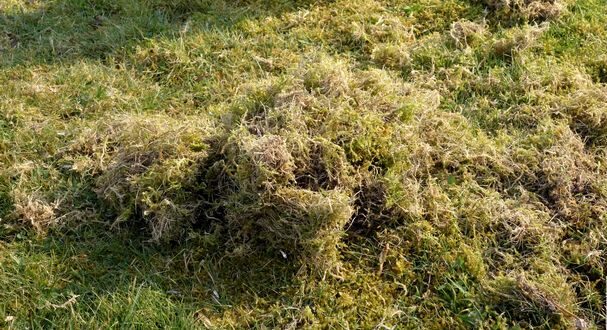
Despite many precautions to preserve the lawn, for example by raising the cutting height of the mower to keep a little cool in summer, but also at the end of autumn, when the first cold weather sets in, the lawn loses ground from year to year while the foam , it inevitably wins. Why ?
Trees
Trees contribute to the charm of a garden. But they also flood the lawn with large shaded areas. However, the lawn needs a lot of light to grow and it does not really like the shade. On the contrary, moss loves these conditions.
Over the seasons, the lawn therefore evolves gradually under the branches. The grass disappears; the moss proliferates.
Unless you cut the trees – of course, that’s unthinkable! – there is not much you can do about it. If it is not planning to install under the massifs where the shade plants.
The ground is wet in winter, too dry in summer.
In addition to the problem of trees, there is often also that of clay soil, which is little or badly drained. In this type of soil:
- In winter, humidity stagnates with the first heavy rains. These soils then become preferred substrates for moss. With all this water, the roots of the grass choke and rot drowned in all this water.
- In summer, with the drought, the lawn yellows , dries up and sometimes dies. Diseased areas give way to the development of moss and weeds as soon as the rains return.
The solution ? Adding sand to the surface can partially lighten these clay soils. But the work is sometimes colossal.
Soil pH
The pH of a soil must be close to neutrality (established at 7). It is sometimes slightly above (7.2 to 7.5, the soil is then a little alkaline), sometimes slightly below (6.5 to 6.9, the soil is then slightly acidic).
The presence of moss indicates a marked acidity of the soil. It can therefore be useful to analyze the pH of the soil, using for example simple strips of pH paper.
Grounds covered with moss thus have a pH that is sometimes quite low, (5 or 6). It should then be brought back to neutrality, in particular by spreading small quantities of a gray powder of natural origin: dolomite (carbonate of lime). It is rather in autumn that these contributions are made, especially in the vegetable garden, to allow time for the microfauna of the soil to assimilate the physico-chemical changes.
Wood ash can also substitute for dolomite in small spaces. It also contains a significant amount of lime.
The scarifier, a solution
In small gardens, when the lawn is overgrown with moss, it is possible to scarify the lawn . This allows it to be aired and the foam felt to be removed quickly without too much effort .
A simple hand scarifier may suffice. Roughly scratch the soil afterwards before resowing in early spring some relining turf mixed with potting soil or sand.
In larger gardens, the scarifier used must be at least electric, or even thermal. Then expect to release an impressive volume of foam !
Moss is useful for animals
If the gardeners rail against the invasion of moss in the lawn , the birds, they rejoice! Their nests contain almost 80% of it. By depriving them of this material, we can’t imagine that they can no longer build their nest in the spring, and therefore welcome their brood of chicks as they should. So they will go elsewhere! It’s a pity, especially since the birds feed on caterpillars, aphids… and therefore play a major role in helping the gardener and the biological balance of the garden through their activities.
Other small animals also use the moss to hide or to fight against cold or drought. These are small rodents, toads, certain frogs but also auxiliary insects such as ground beetles, for example, which are big consumers of slugs.
It is therefore necessary to think twice before making the decision to remove the foam! If you really can’t stand it anymore, don’t remove it everywhere, always keep a few areas for your kind hosts!
